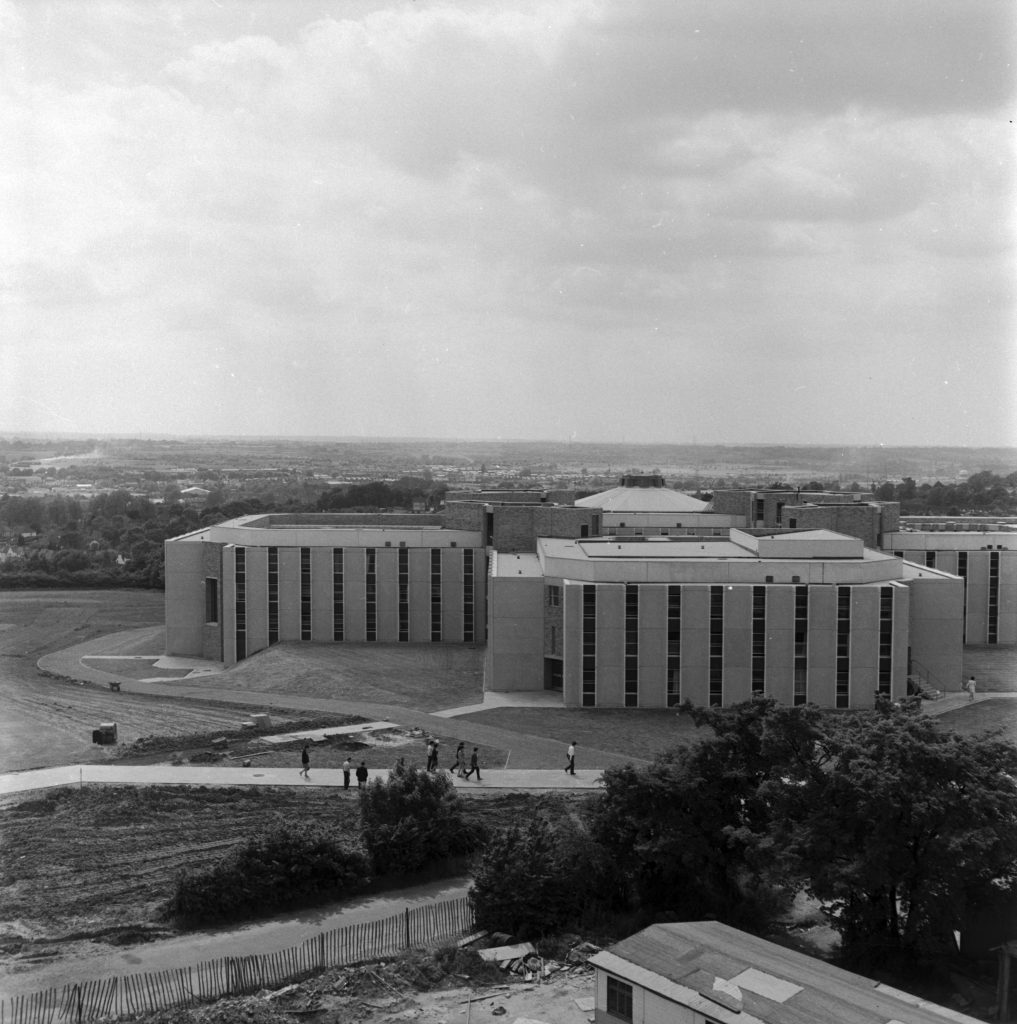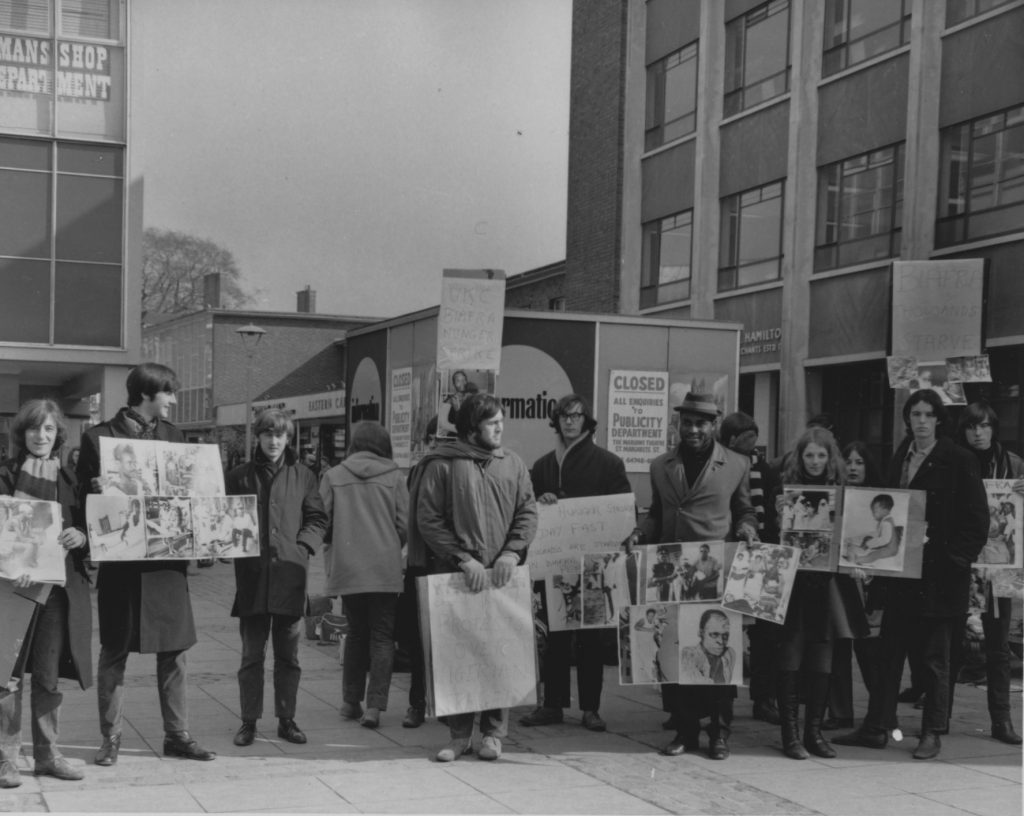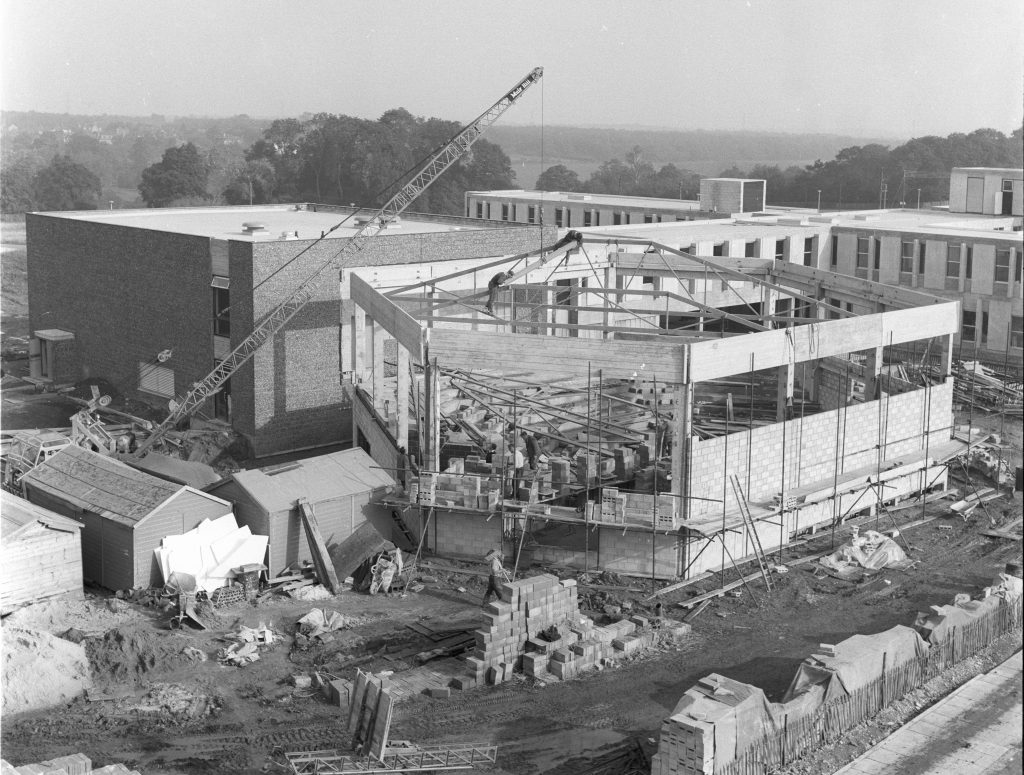Guest blog from Barbican archivists Matthew Harle and Thomas Overton.
Radical Roots and Dangerous Ideas, a youth-led project responding creatively to the archives of the Gulbenkian Theatre at the University of Kent at Canterbury, took place at a doubly exciting time. It was not only the Gulbenkian’s 50th anniversary, but a moment at which our participants were thinking differently about archives, authority and protest in the era of social media and the internet.
The University of Canterbury at Kent (UKC) was founded in 1965 as one of a group of institutions which sought to broaden access to higher education to a growing population of young people. This was the Baby Boomer generation: the children of those who had returned from the Second World War. In contrast to the typically red brick of the universities built in the Victorian era, or the medieval ‘dreaming spires’ of those built long before, the University of Kent at Canterbury was among those known as plate glass universities. This name referred to their modern architecture and design – the glass, concrete and steel which sprang up on the site of this old farm on the edge of the ancient cathedral city of Canterbury.
Building continued in phases as the university expanded in its scope and facilities, accepting its first cohort of undergraduate students in 1965. During their first three years at the University, this group would see both the campus and student culture grow around them. By the time they graduated in 1968, there were three colleges, a university Library, the poet W.H. Auden had delivered the first TS Eliot lectures, and a new student magazine FUSS had been established. 1968 is remembered for a turn in youth culture across the Western world; the May student rebellion in Paris sparked a year of global struggle for progress which was fought on many fronts. From the US Civil Rights Movement to protest against the Vietnam War, and the groundswell of support for the Campaign for Nuclear Disarmament in the UK, messages of protest spread through the mass media whipped up activism and solidarity across students bodies round the world.
Kent was no different, with an active and vocal student culture that assembled in a group of 1500 in the centre of Canterbury to protest Apartheid in South Africa. Sit-Ins, demonstrations and meetings continued on-campus, organised by a busy set of societies and reading groups. To mark the 50th anniversary, Gulbenkian’s young filmmakers group SCREEN 31 spoke to some former staff and students who recounted political and cultural activities from the late 60s-early 70s. (These ‘oral histories’ are now available in the University of Kent Special Collections and Archives.) In just three years, Kent, like some of its fellow Plate Glass universities, such as Sussex, East Anglia and Essex, had grown into one of the most progressive student cultures in the country.
A year and a month after May ’68, a theatre and arts centre, the Gulbenkian, opened up on the University campus. It takes its name from the Calouste Gulbenkian Foundation, which contributed £35,500 to the overall costs of around £54,000. Inspiration came from Leicester’s Phoenix Theatre, which was opened in 1963, and renamed the Sue Townsend theatre in 2014. The committee in charge of the Gulbenkian hoped to demonstrate ‘the possibilities of low-cost theatre building for universities’, hosting a varied programme for students and the general public.
The first production, The Exploding Dream by playwright Richard Drain responded to the revolutionary atmosphere on campus by re-imagining the story of Guy Fawkes. Drain’s avant-garde re-telling of the Gunpowder Plot had been chosen by the Gulbenkian’s young Director, Mike Lucas, as an attempt to shake up the Canterbury establishment and bring the radical tendencies of the University’s students to the local community. The play contained full-frontal male nudity and dialogue calculated to shock the local press. The Gulbenkian had made a name for itself in its opening performance, though later productions were more conservative.
In Radical Roots, we were interested in how the Gulbenkian and University’s past spoke to young people half a century on. What does it actually mean to be ‘radical’? Were their forebears more or less ‘radical’ than they were? Many of the struggles engaged with by students and artists of the 1960s seem almost obvious to young people today: from gender and racial equality, LGBTQ rights, to democratising our experience of culture and exploring marginalised social voices in the arts and media. Yet, only days before the project began, several of the students had picketed their schools on climate strike, or travelled up to London to protest Donald Trump’s state visit to Britain. Rather than feeling that the struggles of the 1960s were remote and to be taken for granted, the participants responded to the energy spread among the letters, magazines and ephemera they discovered in the archive. Their own interpretation and responses have since been absorbed into Kent’s collections — awaiting re-discovery by the next generation.




